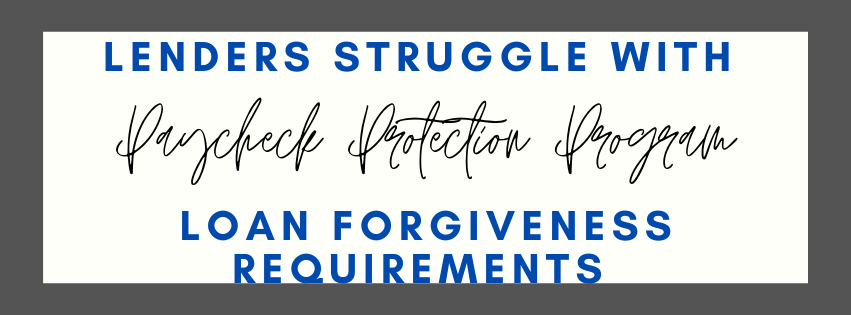With the sudden onslaught of the coronavirus pandemic and the economic closures that resulted, the US government has struggled to provide organized relief in its effort to help entrepreneurs stay afloat and keep their staff employed. One of its most notable accomplishments, the Paycheck Protection Program (PPP,) was designed to help lenders provide forgivable loans to small businesses. The hope was that this program would reduce layoffs and furloughs caused by the shuttering of the economy and lost revenue.
While the PPP has provided relief for many companies, its implementation can be described as unorganized at best. The first launch saw funds depleted in minutes with no opportunity for many business owners to apply due to technical glitches in the system. The second round, which occurred in late April, saw similar malfunctions as well as missing paperwork and funds accidentally given to large companies. Now, we are learning that the lack of order in the application process is creating difficulties for lenders and small business owners seeking to get the government-back loans forgiven.
The main issue seems to be that there is very little guidance on what documentation is needed in order to qualify for loan forgiveness. While the government did lay out guidelines for how funds should be used (originally that 75% of the received loan must be used on payroll in the first two months – now 60% within 24 weeks), the rules and regulations around documenting how money was spent are unclear. For example, guidelines state that the remaining 40%% of the loan may be used for other “qualifying costs,” such as rent and utilities, but there are some expenses that are not considered eligible. Any loan money used on these non-qualifying expenses is subject to repayment to the government over two years at an annual interest rate of 1%. While the interest rate may be low, shouldering an extra payment on funds presumed to be forgivable may be a heavy burden for some companies to bear.
According to Reuters, small business owners who received loans during the first rounds of funding were even told that the forgiveness process was “not yet clear” by their lending institutions and were not adequately educated on what would be required of them when it came time to apply for forgiveness. This may be because banks and other lenders were not given instructions for the hastily-procured loans by the government.
In addition to clarification regarding documentation requirements, banks are now pushing for a standard loan forgiveness form to be issued by the US Treasury Department, thereby simplifying the process for loan erasure. Banks groups have also stated that they would like to have a standard calculator to create uniformity among institutions. While the Treasury and SBA have not immediately responded to requests to comment, we do know that they are aware of the issues and will provide updates as soon as a solution to these problems has been reached.
